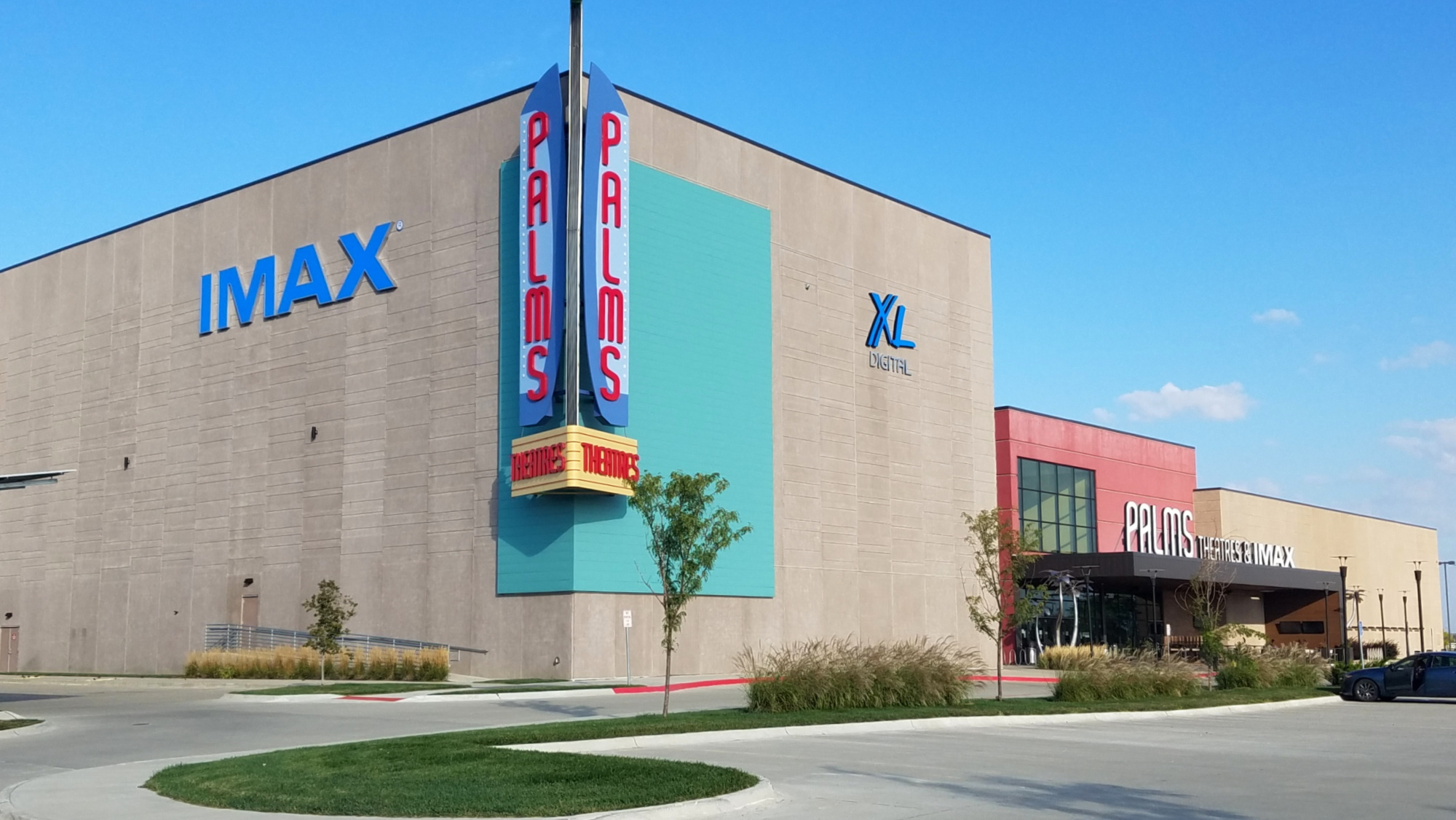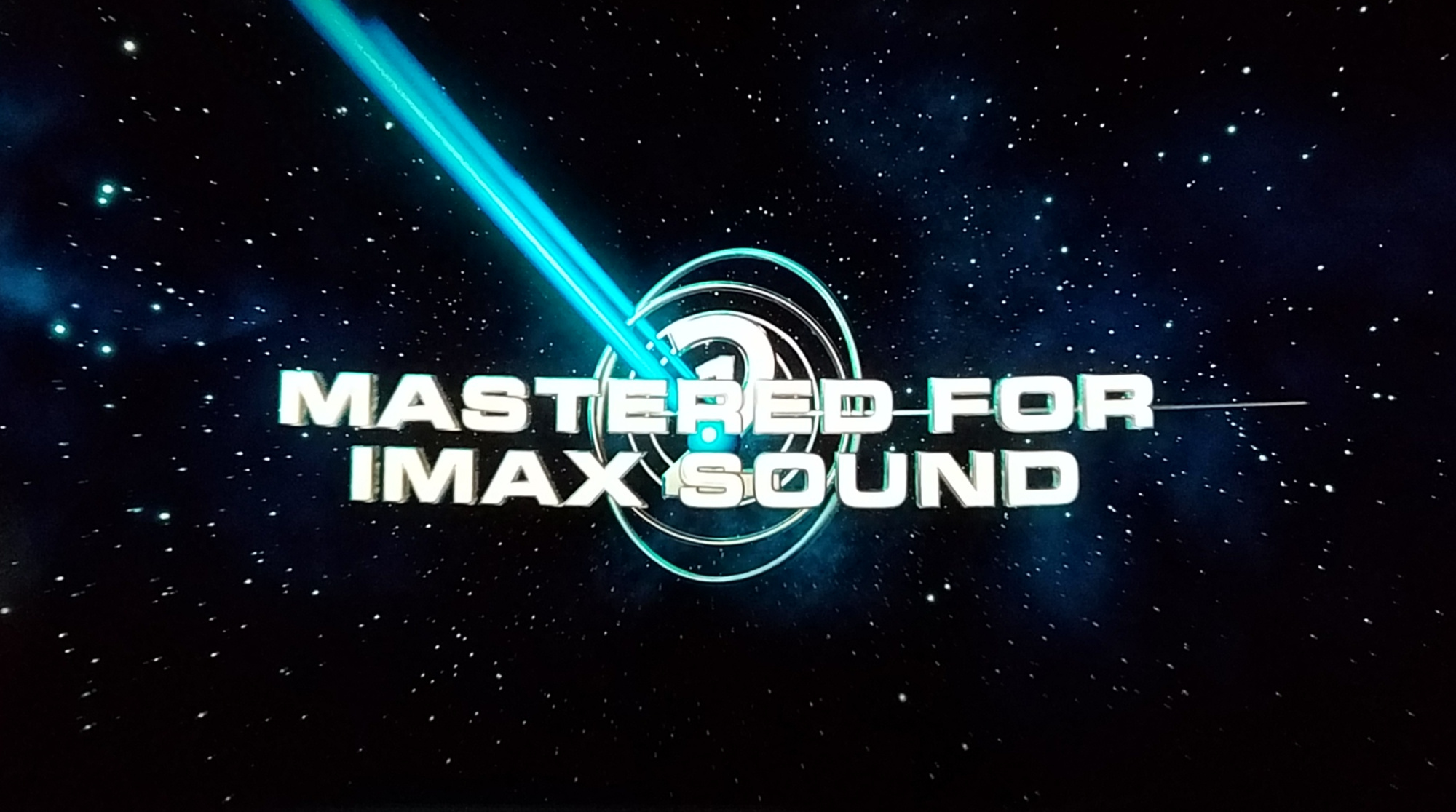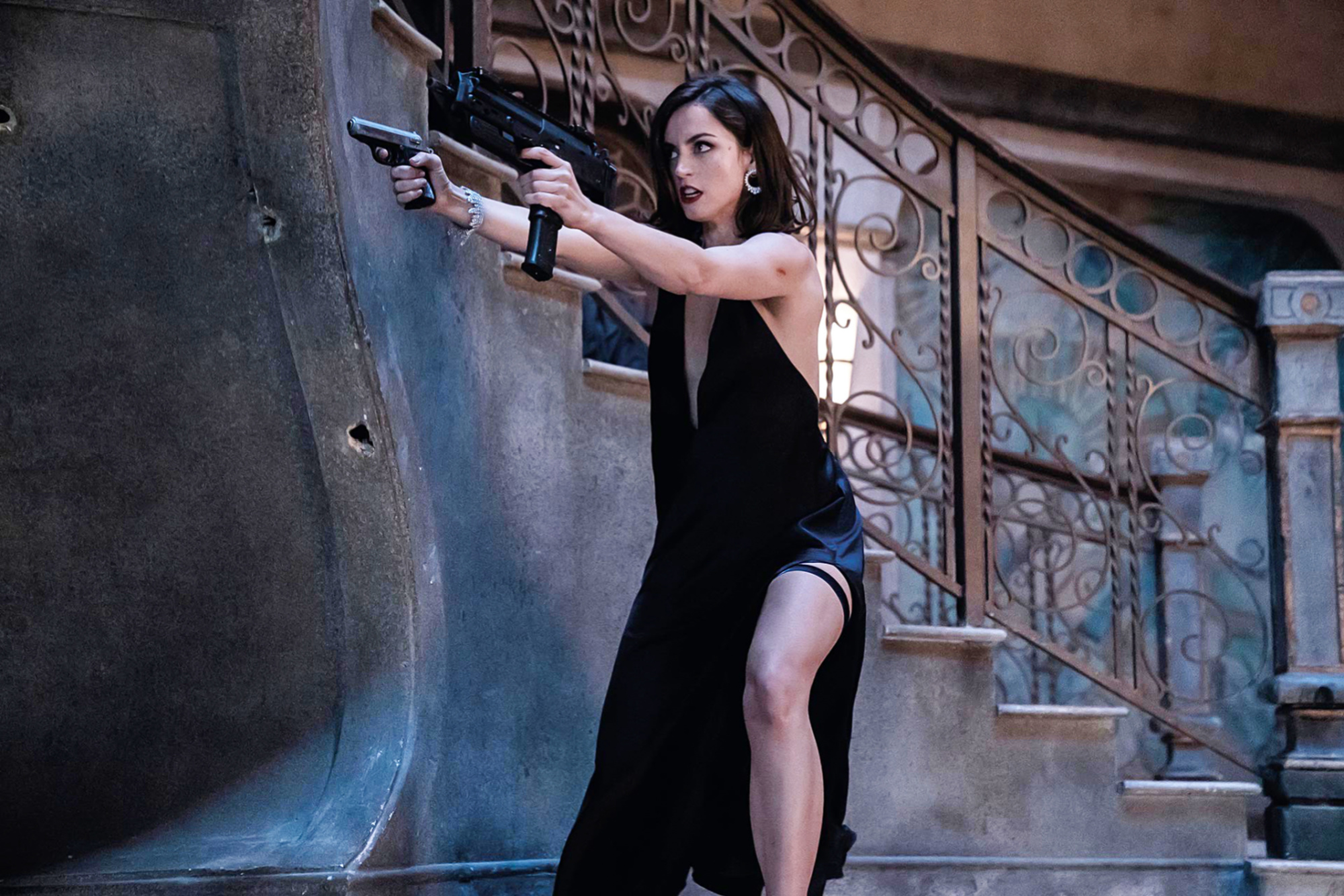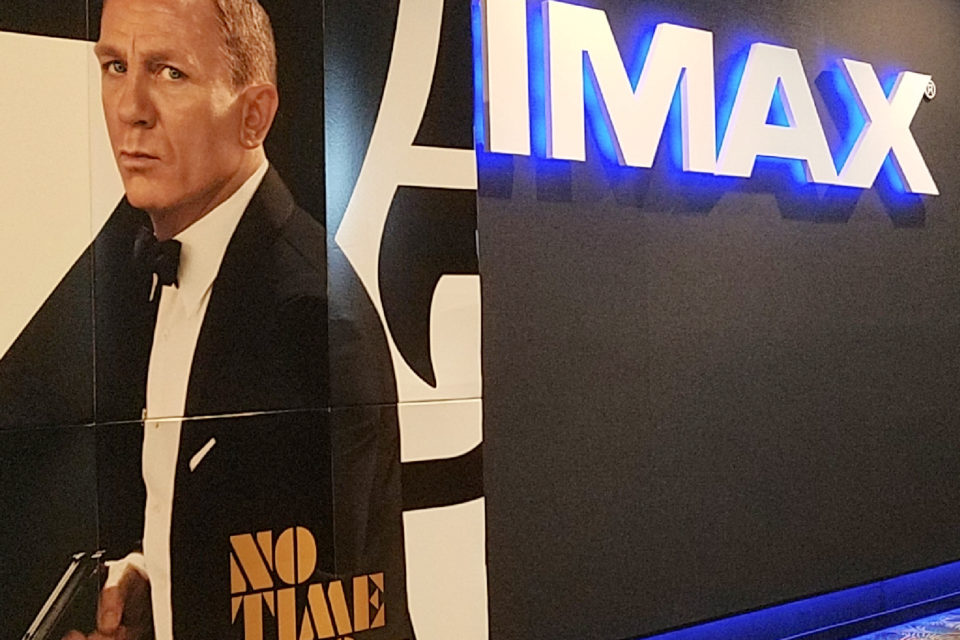Forget that talk about having to wait two years for “No Time to Die” as a result of three delays over 18-months due to the pandemic, and two other delays prior to that due to a change of director and an unfortunate change in release date from Valentine’s Day 2020 – a month before the global shutdowns — to a date that wound up being a month after the shutdowns; Bond fans have actually been waiting six long years since the last Bond movie in 2015, the second-longest gap ever between Bond movies by only a few months.
After all that time, “No Time to Die” isn’t a great Bond movie, not even one of Daniel Craig’s best two entries as the British secret agent, but it is a good episode, quite noteworthy — even controversial, and therefore, well worth seeing. It’s not only better than two of Craig’s other Bond movies, “Quantum of Solace” and “Spectre,” but despite its nearly three-hour running time, it may appeal to a broader audience with its higher quotient of romantic and emotional elements. Craig delivers his most multi-dimensional performance of the series.
Notably, this is the first Bond movie to be converted to 3D and presented in limited theaters in the RealD 3D process, and the first Bond movie with scenes shot using IMAX cameras — 40-minutes worth, including the entire spectacular 23-minute opening that begins with the most eye-popping transition from the trademark gun barrel scene. As the camera pushes forward along the barrel, we begin to see reflections of snow and evergreen trees on the shiny inside of the barrel before we are through to the outside and looking directly down from an apparent drone over the trees in a Norwegian landscape. This sequence is even more breathtaking in 3D, where it feels like you are traveling through the gun barrel.
(Continue reading below following video…)
Later, the giant IMAX film frame that shows 26% more than any other, takes us over and through the cobblestone streets of beautiful Matera, Italy. In addition to being a much bigger screen overall – one of my IMAX screenings was on the 85-foot high screen at the Fridley-owned Palms Theatres & IMAX — the image itself expands by about 13% above and another 13% below a normal screen (the typical theater aspect ratio of 2.40:1 expands to the taller 1.90:1 in most IMAX theaters, and by 40% to 1.40:1 in certain select IMAX locations worldwide).
(Continue reading after photo below… )

The music and sound
The already-Grammy-winning and chart-topping Billie Eilish title ballad No Time to Die is beautiful and powerful but, sadly, instead of creating one of the potentially greatest opening title sequences, the images that coincide with her song are perhaps the least visually dynamic of any Bond film. That is, except for the 3D presentation, where the letters and the moving dots popped off the screen. The digitally animated snowflakes appear as if they are falling in the theater, and the gears, hourglass, pistols, and the shattering marble gun all appear as if they are suspended in mid-air within reach.
Hans Zimmer’s score sounds most clear and prominent in IMAX theater systems (as compared to a viewing of this film in a theater equipped with Dolby Atmos surround sound).
(Continue reading after photo below…)

In addition to the seat-vibrating whoosh from the back of the theater, along the walls, and then to the front as we see Russian MiG jets enter the screen when they buzz Q’s control center airborne in a C-17, the sound system delivers the powerful and nostalgic swells of music cues during the poignant moments that are strong enough on their own to evoke tears. There are not a lot of memorable melodies in the score but there are several noticeable musical moments, including the instantly-rousing notes for a few seconds when the famous Bond Aston Martin DB5 reveals machine guns behind retractable headlights, and the few seconds of jaunty Cuban-influenced notes behind new Bond CIA partner Paloma (Ana de Armas) taking on several attacking bad guys in a night club. Perhaps most notable, especially to Bond fans, is Zimmer’s brief instrumental reprise of the love song We Have All the Time in the World from the 1969 Bond movie “On Her Majesty’s Secret Service” during the Italy segment, which is a touching and warmly nostalgic homage. (Louis Armstrong’s vocal version from the earlier movie plays over the end credits, followed by other pieces of Zimmer’s score, including an enchanting short bit of Eilish vocalizing the theme song without lyrics.)
In another homage to the same film – the first and one of only two others that depict Bond in a deep romantic relationship — Bond (Craig) also resurrects the line of dialogue, “We have all the time in the world” at the beginning here, which was said by Bond (George Lazenby) at the conclusion of the 1969 movie after his newlywed was assassinated as she lay in his arms. Craig’s Bond then reiterates the line in a slightly modified way at the end, reflecting the new reality in that moment.
Action, stunts and cool vehicles
There are, of course, more terrific action scenes and stunts in “No Time to Die” (although this is literally one of those movies where all the best of those scenes are in the trailers and teasers we saw so many times for a year-and-a-half instead of the usual several months – Bond riding a motorcycle up a steep cement incline leading to a jump over a wall, grabbing a cable and jumping off a bridge, the DB5 spinning in circles as guns shoot from its headlights — these scenes don’t last much longer in the film than they do in the trailers, and director Cary Fukunaga doesn’t present them with the immediate and lasting impact they deserve). The return of the DB5 is cooler than ever with a switch that flings “mini-mines” (spiked ball-shaped grenades) from the car, and the return of the smokescreen. In the moments before the reveal of the amazing retractable headlights that are replaced with machine guns, Bond and Madeleine are surrounded and trapped, as men fire a seemingly absurd amount of bullets at close range into all the car windows for what seems like an eternity, with Madeleine screaming and pleading with Bond to do something. The 3D presentation of this scene significantly increases the intensity as it makes you feel as if you are inside the car as the bullets keep hitting the windows. (Continuity nitpickers will notice that after the DB5 is T-boned by a truck on the passenger door, there is no noticeable damage there as it spins and shoots. Also, in a tight shot from the door looking across the front wheel well as the car is doing 360-spins, it’s obvious that the tire is not turned at all even as the car is spinning.)
This time there is also the return of the classic Aston Martin V8 Vantage Saloon similar to the one first seen in the 1987 Bond movie “The Living Daylights” – Bond uncovers it in the same garage he dramatically revealed the DB5 to M in “Skyfall,” complete with a very lowkey and brief image of M’s familiar porcelain bulldog figurine, most prominently visible in the 3D version. (Interestingly, this movie pays homage to two former Bond films starring actors who did only one and two Bond movies each, Lazenby and Timothy Dalton.) And just as we have recently seen a new Aston Martin along with a classic one in most of Craig’s films, this time it’s the sleek new DBS Superleggera (2019 model, remember the movie was filmed two years ago), driven not by Bond but his replacement agent Noma (Lashana Lynch) — here we also get a glimpse of a second new one, the concept car Vahalla (coming in 2022) sitting in the background behind M at Q’s lab in a couple shots.
(Continue reading below photo…)

And there is a nifty glider plane called a “Stealthy Bird” that Nomi pilots with Bond as her passenger, with the wings unfolding in flight and then collapsing as it dives in the ocean to be propelled underwater into the missile silo that is villain Safin’s island lair.
Supporting characters and humor
The movie also features interesting new and returning characters – Armas is a knockout in her surprisingly all-too-brief segment of 12-minutes in Cuba near the beginning (also enhanced significantly by being shot with IMAX cameras).
(Continue reading below following photo…)

Her Paloma character is giddily excited to team up with Bond, banters with him quite cutely and humorously while helping him into a tuxedo, and then takes down as many bad guys as Bond with her high kicks (in a slinky, floor-length black formal gown with a deeply plunging neckline) and gunning down three foes while lying on the floor and spinning.
Paloma is sexy but it’s so much more than that; her personality is instantly cute – momentarily seeming like a flirtatious airhead, but then it’s quickly clear that she is savvy and physically powerful and an expert fighter and shooter, set up well as a fun surprise with her saying she has had three weeks of training as if she thinks that’s a lot of time. After seeing her handle herself with aplomb, Bond smirks and says, “Three weeks of training, really?,” to which she responds, “More or less.” Also brilliantly written and directed is the two of them stopping suddenly amidst their fast-paced mayhem to have a drink at the bar for two seconds (this is shortly after Bond flings a round metal drink tray disc at another bad guy Odd Job-style). Stepping outside in an effort to respond to Bond’s request to find a getaway car, Paloma brazenly gets into a classic ’57 Chevy (a call-back to the similar one seen in first Bond movie Dr. No nearly 60 years ago) and drives it with strategic abandon across the street into a wooden scaffolding to knock down an evil scientist they are after, from the top level onto the hood of her car. She even has the wherewithal and thoughtfulness to pick up a new cigar off the seat to give to Bond so he can gift it to Felix. Ana’s energy and bubbly manner is evident instantly in her initial introduction to Bond at a bar when she says “vamos” after chugging a vodka martini (shaken, not stirred, of course), and a few minutes later when they part ways with her saying, “This is my stop, next time stay longer” with a sex kitten look in her eyes, followed by handing Bond the cigar as she says “Ciao!” This brief section of the film with Ana’s charismatic Paloma character packs in more of the quintessential Bond movie elements than the rest of the movie combined, including Bond in a tux, having his signature drink, and his trademark charming interaction and banter with the perfect flirtatious and audacious Bond woman.
There are some mildly amusing moments of humor in other parts of the movie as well, particularly when Bond and Moneypenny crash Q’s home as he is preparing dinner for a date (Bond teases Q about his hairless cat, “They make those with fur now”), but too many lines intended for humor fall flat, including the clever way Bond is forced to say his signature “Bond, James Bond” line to a guard at an MI6 check-in desk who doesn’t recognize him — somehow in Fukunaga’s direction and editing, it doesn’t get the laughs it deserves. Other times Craig tries to deliver the kinds of lines we heard too often from Roger Moore’s Bond as well as Pierce Brosnan’s, and Craig doesn’t pull them off, such as when he uses the watch Q gave him to kill Safin henchman Primo/Cyclops by sending a short circuit/electrocution through Primo’s bionic eye, then tells Q that he showed the watch to Primo and “It blew his mind.”
New 007 agent Noma gets some giggles when she learns in a meeting in M’s office that Bond has been reinstated as a 00-agent. “Double-Oh what?” she asks, worried that he will get his 007 number back from her. She gets no reply, and moments later, after she answers another question, she reiterates, “Double-Oh what?” The concern of some fans that the movie would end with a female 007 gets at least momentarily resolved later in the film when Nomi unselfishly tells M she wants Bond to have his 007 number reinstated.
Fukunaga and the writers don’t give Lashana Lynch much to sink her teeth into – her character is almost negligible, but she does fine with what she has to work with.
Meanwhile, Léa Seydoux and her writers deserve the award for most-improved, as her Madeleine character is imbued with much more life and dimension compared with her rather dour portrayal in her first outing in “Spectre.”
David Dencik’s scientist Valdo Obruchev is played for mild amusement as a sniveling self-absorbed man who kind of blows with the wind. When pushed down an elevator shaft as an escape near the beginning he panics while falling until he gets how the set-up worked to bring him to a quick stop at the bottom, and says simply, “Magnets.” During the initial attack on Safin’s island lair near the end, as Bond and Nomi are destroying everything, Obruchev whines a seemingly natural thing to say to Bond under the circumstances until we later realize it was a subtle tell/foreshadowing: “You have to know this is a suicide mission; you will never get off this island alive.”
The convoluted set-up
But then there is the rest of the somewhat bloated movie (it could easily have been at least a half-hour shorter) that follows another unnecessarily convoluted plot in which a man called Safin (Rami Malek), who saw his parents and entire family mass murdered as a child by Mr. White (from Casino Royale, Quantum of Solace and Spectre) under orders from Blofeld, is now out for revenge against Blofeld (now in a London maximum security prison) and his SPECTRE terrorist organization. As an adult, Safin goes to the home of Mr. White in Norway seeking revenge wearing a disturbing white mask, but only finds Mr. White’s wife and their pre-teen daughter. He kills the mother but the daughter shoots Safin at close-range at least 8-10 times by my count, with at least some of the shots clearly hitting him as evidenced by bullet holes in his jacket. This whole opening scene plays out like a horror movie with Safin seeming like the hockey-masked murderer Michael Myers from “Halloween.” After getting shot and falling from the second floor, landing flat on his back, then getting dragged through the house and his head banged down on each step outside the house, Safin just suddenly opens his eyes, sits up, and starts walking towards the fleeing girl as if nothing had happened to him, just like Myers in “Halloween.” (I suppose it’s possible he was wearing a bullet-proof vest and was only momentarily stunned, but even that wouldn’t explain the lack of injury from the fall he took.) The girl runs across a lake that is covered in thin ice and falls in. The 3D effect here makes it look as if you are right above the ice and could maybe reach out and grab young Madeleine as she flails in the water trying to get out. Inexplicably, Safin saves her (years later he reverses this act of kindness, also for reasons unclear).
We immediately learn (as we suspected) that little girl grew up to be psycho-therapist Madeleine Swann, who was Bond’s love interest in “Spectre,” and is again at the beginning of this movie. While relaxing in Italy, Madeleine tells Bond he must create closure of his relationship with Vesper (she died in “Casino Royale” after betraying Bond) by going to Vesper’s grave and forgiving her so that Bond and Madeleine can move on with their relationship. But when Bond goes to Vesper’s tomb a few minutes later, he sees a business card from his long-running nemesis organization SPECTRE moments before a huge blast comes from the tomb, inches in front of Bond. There is a nice use of sound here for a few moments to simulate the hollow, in-a-tunnel-type ambient noise as it must sound to Bond’s ears following the explosion (this effect is repeated near the end when an explosive goes off near Bond in a stairwell of Safin’s lair). Bond clears his head and immediately suspects that Madeleine has betrayed him to SPECTRE, especially when, during the ensuing chase, Blofeld henchman Primo/Cyclops (he begins as Blofeld’s henchman but then switches to Safin) tells Bond that “Blofeld sends his regards” and that Madeleine is “a daughter of SPECTRE” (it’s never clear how SPECTRE knew Bond would be at the tomb at that moment, though Blofeld later tells Bond that he knew Bond would eventually go visit the grave, and only had to wait for Madeleine to lure him there). While fleeing in the DB5, Bond picks up a call to Madeleine’s cell phone and hears Blofeld tell her, “Your father would be so proud.” Bond puts Madeleine on a train and tells her she will never see him again (in a subtle plot-point tell, as Madeleine reacts to this news, she makes a seemingly slightly odd gesture of putting her hand on her stomach area – we later learn she was likely pregnant at this moment). Well, we all know Madeleine will indeed see Bond again.
Five years later, Madeleine has a daughter and Safin has developed an instantly-fatal virus that spreads through nanobots to specific victims determined by their DNA. The biological weapon intrigues M at MI6, so he secretly tries to help develop it under the leadership of double-dealing scientist Obruchev who is quietly more loyal to Safin. Meanwhile, Safin wants to use his virus on Blofeld, but the only way to get to Blofeld is through Madeleine, who happens to be the only person Blofeld will speak to in prison. Safin threatens Madeleine’s daughter if Madeleine doesn’t apply the virus to her skin and spread it to Blofeld by touching him so he will be exposed and die instantly. Meanwhile, Blofeld is inexplicably able to organize his entire SPECTRE team from inside the prison using a remote-controlled camera in a “bionic eye” that he somehow managed to come up with while in prison without anyone noticing he’s filled his empty eye socket from “Spectre” or that he is, incredibly, sending and receiving audio and video messages from deep inside a prison to Primo/Cyclops, who also has a reciprocal bionic eye (Bond smashes Primo’s head so hard into a wall back at the beginning of the movie shortly after the explosion at Vesper’s tomb that Primo’s bionic eye pops out of its socket and rolls down the cobblestone road, but minutes later the one-eyed Primo is shooting point-blank at Bond and Madeleine in the DB5.)
Down in Jamaica, where Bond is now retired and doing a lot of sailing and fishing, this all starts coming to a head when the CIA gets wind of MI6’s ill-advised involvement with this new virus weapon and their misplaced trust in the scientist Obruchev, who is heading to Cuba for a secret gathering of every SPECTRE agent to celebrate Blofeld’s birthday remotely. Both MI6 and the CIA try to bring Bond out of retirement to help out. M sends Bond’s replacement agent Nomi to Jamaica to help sway him, but after initially refusing both offers, Bond, for no obvious reason, suddenly decides to go with his old CIA buddy Felix. Felix has a seemingly goofy partner from the State Department along with him (Bond asks Felix about his overly-smiley, fresh-faced, White partner, “Where did you find the Book of Mormon?”). This man, Logan Ash, also turns out to be a double-agent, and also loyal to Safin. Stretching credibility, all these people are all hanging out at the same small dive bar in Jamaica on the same evening.
Then they all wind up in Cuba for the meeting of all the members of SPECTRE to celebrate Blofeld’s birthday, where Primo/Cyclops — still with that empty eye-socket five years later — believes he has arranged with the Obruchev to get Bond’s DNA in the virus, which he will spray in a gas form when Bond sneaks into the gathering of SPECTRE members, killing Bond in a most satisfying way while SPECTRE members watch while circled around Bond (including Blofeld, who watches through Primo’s bionic eye being carried around on a pillow by some SPECTRE sycophants. But Obruchev has switched the DNA to target all SPECTRE members instead, who then all die in front of Bond (Primo finally grabs his bionic eye back when it falls on the floor in the chaos — it’s not clear why Primo is not affected by the gas), while Obruchev and the turncoat Logan Ash try to flee to get back to Safin.
This is an awfully lot to follow and at this point we’re only about 45-minutes into the movie.
The next two-hours is filled with far too many characters who are double-agents – the scientist Obruchev, the State Department guy Logan Ash, the guy with the bionic eye Primo aka Cyclops, and there is far too much shooting as everyone is trying to get to Safin in his lair, where he is now plotting to unleash his nanobots virus globally (this desire is also not explained), while Bond and Madeleine try to work together regarding Blofeld as Bond tries to figure out whether he trusts Madeleine and then re-develop their relationship.
15-years of changes and finale blow-out of the Bond formula
In addition to the first-ever options of seeing a Bond movie in 3D and/or IMAX, “No Time to Die” is filled with all manner of firsts and unprecedented elements for the franchise, starting with the running time of 2-hours and 43-minutes, which is 15-minutes longer than the previous longest Bond movie, which was the previous film, “Spectre.”
First warning!: Every surprise in No Time to Die is discussed below starting five paragraphs from now… (this film cannot be properly or fully reviewed without discussing these elements)
Before we start listing those trope-dispensing twists in “No Time to Die,” let’s be clear, the Daniel Craig Bond movies have been upending the cinematic James Bond 007 movie formula since his introduction in “Casino Royale” in 2006 (to be fair, from the beginning in 1962, the movies also greatly embellished the original Ian Fleming books that had little humor, gadgets or cool cars, and far less womanizing by Bond – see my James Bond 007 Movies Guide). In addition to Craig being the first blonde and stocky Bond of the films (although Roger Moore’s hair was close to blonde and died darker to be brown for his Bond films), there was no traditional through-the-gun barrel turn-and-shoot opening, no Moneypenny or Q, almost no humor and few gadgets, not even any sign of the James Bond theme music until the last few seconds. In fact, Craig said what attracted him to take the part was when he read in the script where Bond dismisses the option of a vodka martini shaken or stirred with, “Do I look like I give a damn?”
We dismissed all that as being because it was an origin/reboot story, and because “Casino Royale” is a terrific movie, but the follow-up entry, “Quantum of Solace,” continued most of that bucking of form while adding a couple unprecedented components: a Bond movie that continued the storyline from the previous movie — picking up immediately where “Casino Royale” left off — and by killing off a longtime continuing character, Bond’s French MI6 colleague René Mathis.
The third entry, “Skyfall,” brought back the music, the humor, and Moneypenny and Q with terrific new actors. But it also killed off another iconic Bond actor, Judi Dench, who played Bond’s longtime boss M for 17 years across seven films.
The fourth one, “Spectre,” re-introduced Bond’s arch enemy of the 1960s, Blofeld, but took another out-of-the-norm step of reverse-engineering the storylines of the previous three movies by tying Blofeld to everything and everyone bad in all those films as well as in “Spectre.”
Last warning!: Every surprise in No Time to Die is about to be discussed immediately below…
But “No Time to Die” feels like the producers (and Daniel Craig is a co-producer) willfully and with glee decided to burn down almost all the remaining franchise lynchpins, as someone who is being forced to turn over their business to someone else might do just before the handoff (note, Amazon is proposing to buy MGM, the studio that distributes Bond movies, but it would not get any control of EON, which produces the movies), or as if EON principles, the children of Bond movies co-creator Albert “Cubby” Broccoli, daughter Barbara Broccoli (61 years old) and Michael G. Wilson (79 years old) are planning not to produce any more Bond films (Broccoli has said repeatedly that she cannot imagine anyone else playing Bond after Craig, and she is producing a play with him right now, and has been pursuing other stage and cinema productions). No one knows what their plans are at this point.
But let’s go through some of the Bond movie formula departures they threw at us this time, in order of their occurrence:
- A horror movie-type opening scene in which Bond does not appear.
- The longest-ever opening sequence by more than 10-minutes; this one goes nearly a half-hour into the movie (23-min).
- For the first time, the opening gun barrel sequence does not end with blood dripping down after Bond shoots at the camera.
- Time-jumping, a rarity even once in Bond films, but here it jumps twice, opening when Madeleine is a child, then jumping ahead at least 15 years to when she and Bond are lovers in Italy (all before the opening titles), then jumping ahead another five years (Bond was already looking and talking about how old he was getting in “Spectre,” which took place five years earlier — how old must he be now?)
- The first female and non-White agent 007.
- The killing of another major long-running character, Felix, of the CIA, who has been Bond’s closest work ally and friend since the very first film, “Dr. No,” in 1962. – In 3D, it seems as if you are underwater with Bond and Felix as the boat is sinking, as if you could almost reach out to help.
- Of the more than a half-dozen actors to play Blofeld, Christoph Waltz is the first to do so in more than one Bond film.
- The killing of yet another major long-running character, Blofeld, Bond’s arch-enemy since “Thunderball” in 1965, and he doesn’t go out in very spectacular fashion befitting such an icon.
- Bond’s serious relationship with a woman — Madeleine — carrying over to the next movie.
- Bond having a child, Mathilde, daughter of he and Madeleine.
- And, of course, Bond being killed at the end, which, once this decision was made, is handled as well and with the level of emotion one would want to see, bringing many to tears – every close-up is more powerful in the 3D version, particularly Daniel Craig’s in scenes like this final one and in his face-to-face confrontation with Safin. But killing off the centerpiece of your franchise does not appear to be a smart move at first glance. It will be years before we learn the ultimate outcome of this radical decision and strategy.
All of this adds up to “No Time to Die” feeling not so much like a Bond movie (especially the last two hours) but more like any number of big-budget action films with a leading man who has not been a cinematic icon for nearly 60 years.
As sadly moving as the ending is for some viewers — primarily those who were not angry about his demise or not particularly invested in Bond as a character and a franchise — everyone seemed to be stunned by it. Those who stay through the credits are initially relieved to see those familiar words, James Bond Will Return, but are left to ponder how that will be possible and in what way or form, let alone when.
We never really learn why the movie is called “No Time to Die,” unless it was intended to refer to Bond being killed; if so, perhaps it should have been called “No Time for Bond to Die,” which is the truth.
By Scott Hettrick
